Last year, I looked at requirements for NQS to make regionals from 1998 through 2023. Since we have officially concluded the regular season and final NQS scores are in for 2024, I have decided to check out an update for the new season. With the Tennessee Classic giving Ball State the second 198 of the season, a whole list of record-breaking rotations and meet scores for many teams, Oklahoma breaking the all-time NQS record with a 198.500 and the single-meet score with a 198.950 at the Big 12 Championships, it’s safe to say that things have gotten worse instead of better.
Some people still talk about the 2004 season as the peak of high scoring that we “might get to,” but we long passed 2004-level scoring. We hit 2004 in 2021, and now we’re moving further and further into entirely new territory of ridiculous scoring, and more teams are getting in on the fun. While a lot of inflated scoring in the past had been limited to top teams, we’re now seeing the score requirements for getting a seeded spot at regionals (16th), avoiding a play-in (28th) or even making regionals (36th) have been getting higher and higher every year.
Comparing 2023 and 2024
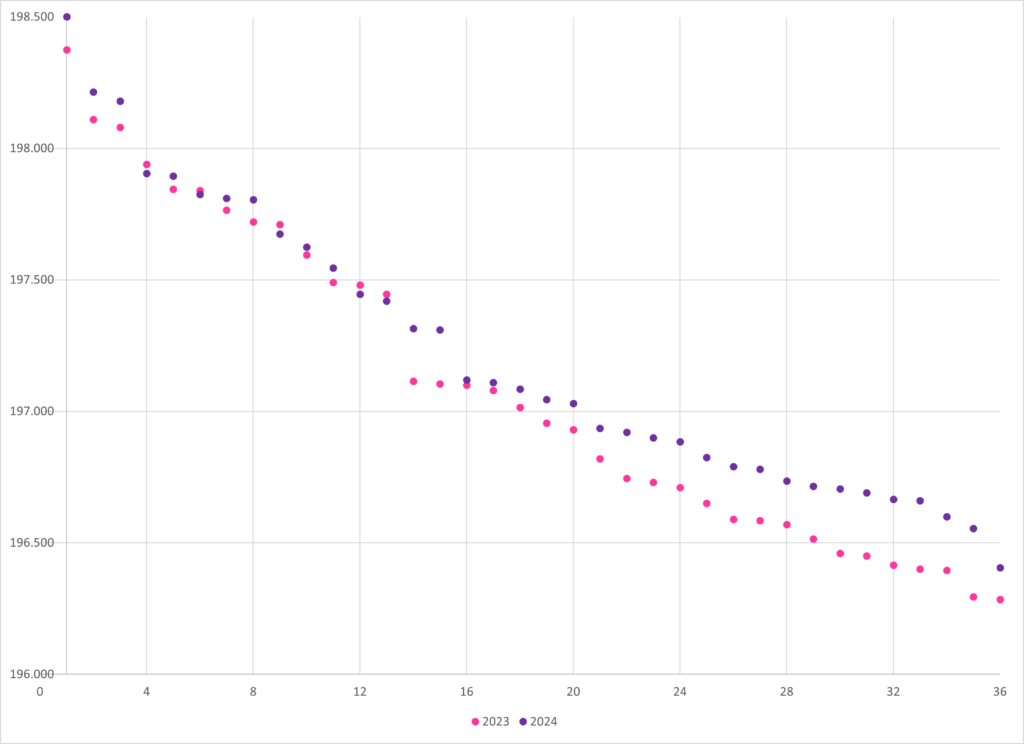
First, I’ll compare 2024 to 2023, since 2023 is the only year we can mathematically call “consistent” (by p-value, with the two-tailed t-test giving a p-value of 0.379) with 2024.
| Year | Average | Max | Min | Variance |
| 2023 | 197.092 | 198.375 | 196.285 | 0.365 |
| 2024 | 197.212 | 198.500 | 196.405 | 0.294 |
| Difference | 0.120 | 0.125 | 0.120 |
You can see that the average, max and minimum regionals-qualifying NQS all increased just over a tenth of a point (the average and minimum both increasing by 0.120 is just a fun mathematical coincidence).
Looking at the chart, the score requirement for the bottom 16 teams saw a wider margin than the top half of the rankings, which is to be expected with score inflation – there’s less room to inflate when the scores are already clumped in a 9.90+ range. The top three teams saw an average NQS increase of 0.110; teams 4-16 saw an average increase of 0.042 with five ranks actually seeing lower required scores in 2024; and teams 17-36 seeing an increase of 0.172.
Comparing 2004 and 2021-24
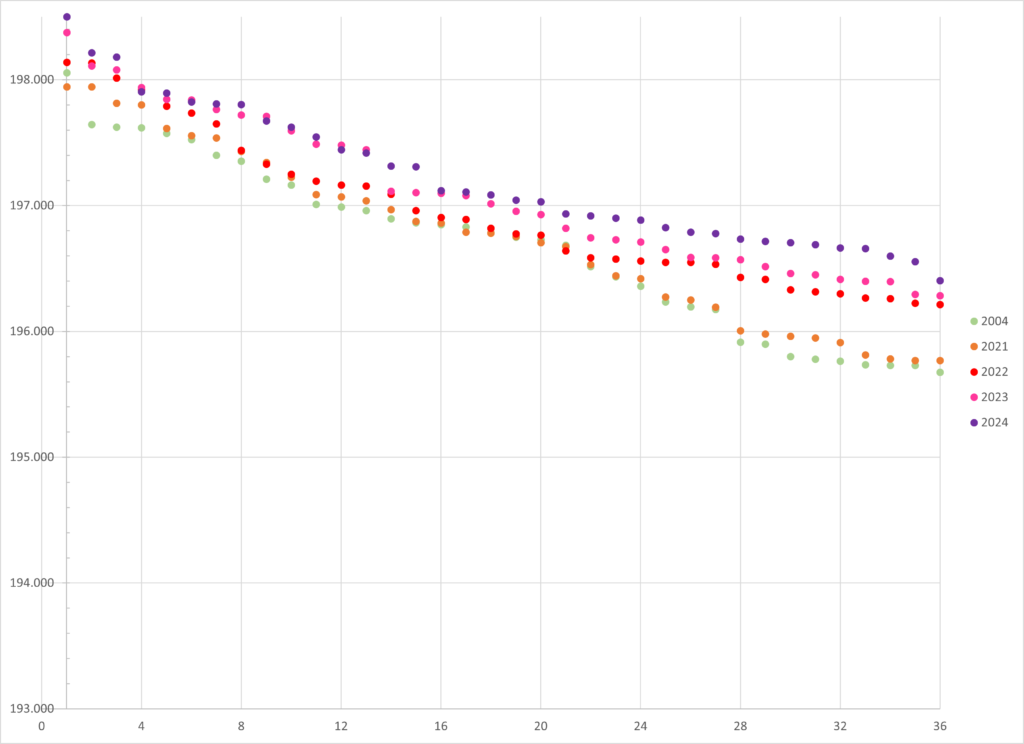
| Year | Average | Max | Min | Variance |
| 2004 | 196.680 | 198.055 | 195.675 | 0.464 |
| 2021 | 196.747 | 197.844 | 195.769 | 0.469 |
| 2022 | 196.941 | 198.140 | 196.215 | 0.349 |
| 2023 | 197.092 | 198.375 | 196.285 | 0.365 |
| 2024 | 197.212 | 198.500 | 196.405 | 0.294 |
As I said earlier, 2004 can best be compared with 2021, while 2022 through 2024 have all gotten progressively higher.
| 2021 | 2022 | 2023 | 2024 | |
| 2004 | 0.680 | 0.087 | 0.008 | 0.000 |
| 2021 | 0.201 | 0.053 | 0.011 | |
| 2022 | 0.287 | 0.047 | ||
| 2023 | 0.379 |
These are the two-sided t-tests to directly compare two years. When looking at statistics, we generally use p=0.050 as our cutoff to determine whether two data sets can be considered consistent (to completely bastardize what p-values and descriptive statistics mean – the College Board is revoking the 5 I got on my AP Stats exam back in 2005 as we speak). We can see that 2004 and 2021 were pretty consistent with each other, and each of the years in the 2020s are pretty consistent with the immediately prior year, but 2024 is definitely higher than 2004.
Rank Equivalencies
Next I looked at where 2024’s rank 8, 16 (a seeded spot), 28 (no play-in) and 36 (regionals) would rank each year since 1998.
| Rank | NQS |
| 8 | 197.805 |
| 16 | 197.120 |
| 28 | 196.735 |
| 36 | 196.405 |
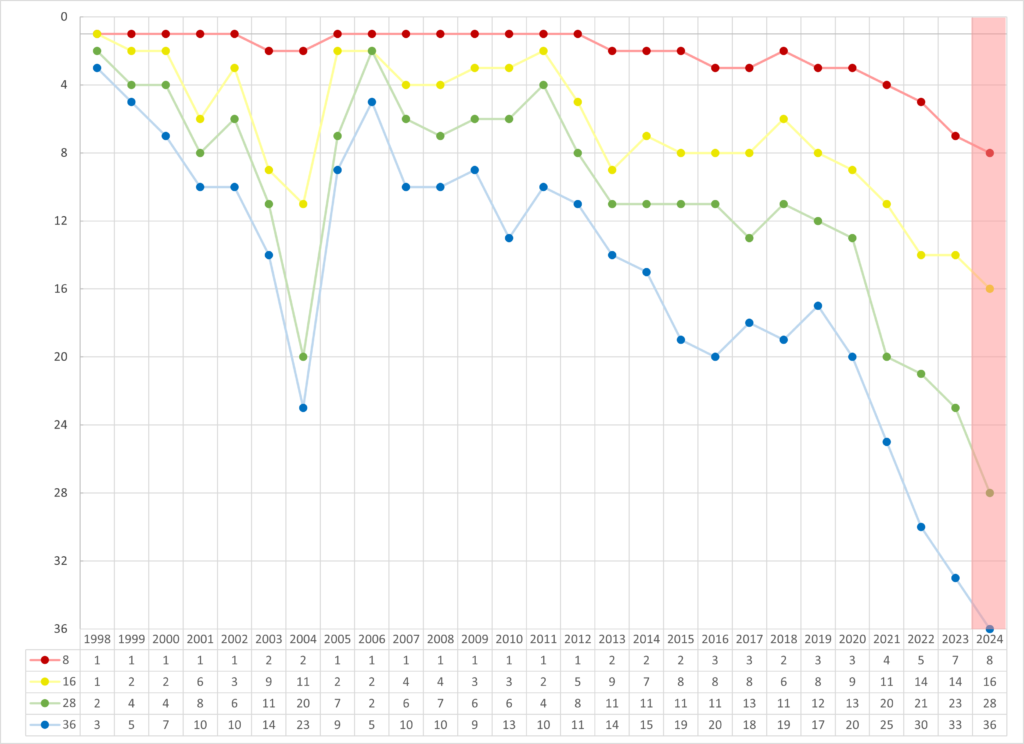
As with 2023, some of the biggest jumps in rankings come in the bottom half of the NQS numbers, but we also saw increases at the top. 2024’s rank 8 would have been rank 1 every year from 1998 through 2012 (except 2003-04).
The last team to make regionals in 2024 would have been fifth in 2006, and would have netted a seeded spot every year until 2015 (except 2004).
NQS Requirements
I also charted the difference in NQS requirement for the first ranked team between 2024 (198.500) and each year since 2000:
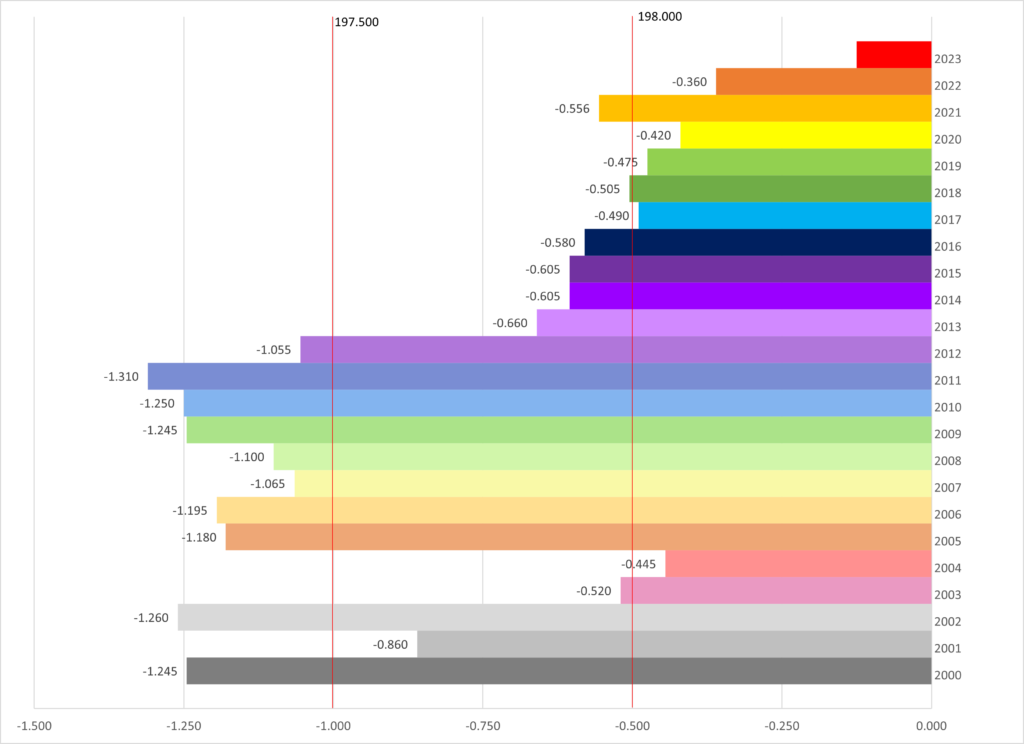
And the difference in NQS requirement to make regionals (rank 36) in 2024 (196.485) and each year since 2000:
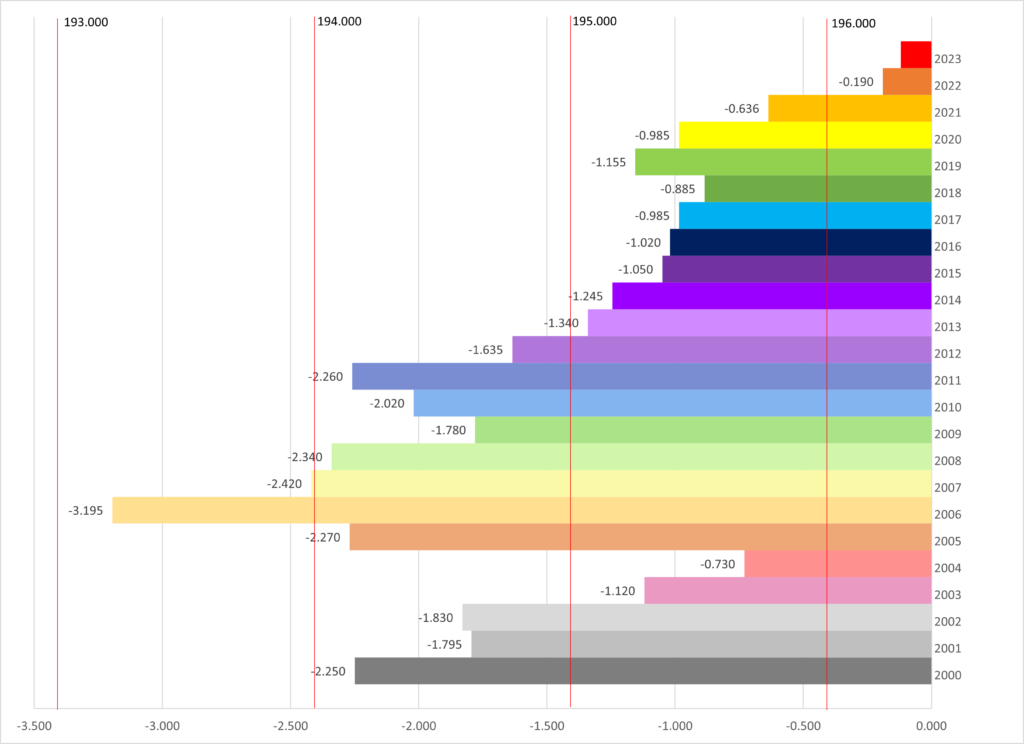
If you’re interested in scoring for other clumps of years, I went into a lot more detail for everything pre-2020 in my previous post – 25 Years of Regionals NQS Requirements.
